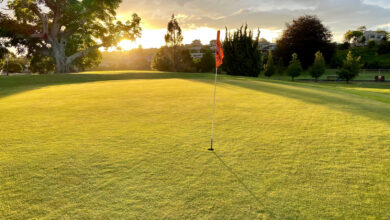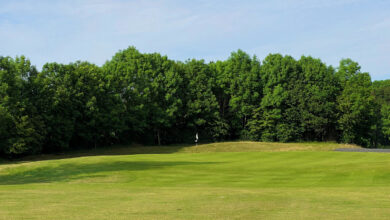The art of reading high and low bounces involves understanding the physics of the golf ball, analyzing the terrain, and making quick decisions on how to approach the shot. It requires a keen eye, experience, and a deep knowledge of the golf course.
When it comes to high bounces, there are a few factors to consider. The first is the angle of attack. If a golfer has a steep angle of attack, hitting down on the ball, it is likely to result in a higher bounce. On the other hand, a shallow angle of attack, where the club is more level to the ground, will produce a lower bounce.
Another essential factor to consider is the type of club being used. Irons, especially those with a more substantial loft, tend to create higher bounces compared to woods or hybrids. The condition of the turf also plays a part. Drier and harder turf will provide more bounce, while wetter or softer grass will absorb some of the impact, reducing the bounce.
Apart from these physical factors, golfers must also pay close attention to the slope and contour of the landing area. Uphill slopes tend to kill the bounce, making it harder to predict how the ball will react. On the other hand, downhill slopes can result in a significant increase in bounce, often leading to longer rolls after landing.
Low bounces, on the other hand, require a different kind of approach. When reading low bounces, golfers need to consider how the ball will skid or roll upon impact. For instance, hitting the ball with a lower trajectory and less spin will prevent it from flying high and instead allow for a lower bounce. This technique is often used to navigate through hazards or narrow fairways.
Understanding the ground conditions is crucial when aiming for a low bounce. Hard and dry surfaces provide little resistance, allowing the ball to roll more. Conversely, softer or wetter ground slows down the ball’s roll, resulting in a higher bounce or even a halt.
When approaching a shot, experienced golfers will carefully analyze the terrain, take note of any slopes, and consider the trajectory and spin needed to achieve the desired bounce. This art requires both technical expertise and a profound knowledge of the golf course being played.
To improve their ability to read high and low bounces, golfers should practice on a variety of courses with different ground conditions. By experiencing different scenarios, they can refine their skills and learn how to adjust their shots accordingly.
In conclusion, the art of reading high and low bounces is an essential skill for any golfer striving for success. By understanding the physics of the golf ball, analyzing the terrain, and making quick decisions, golfers can anticipate how the ball will react upon landing. The ability to read high and low bounces allows golfers to plan their shots more effectively, avoid hazards, and ultimately improve their overall performance on the golf course. So next time you step on the course, pay close attention to the bounces – they might just make the difference between a birdie and a bogey.




